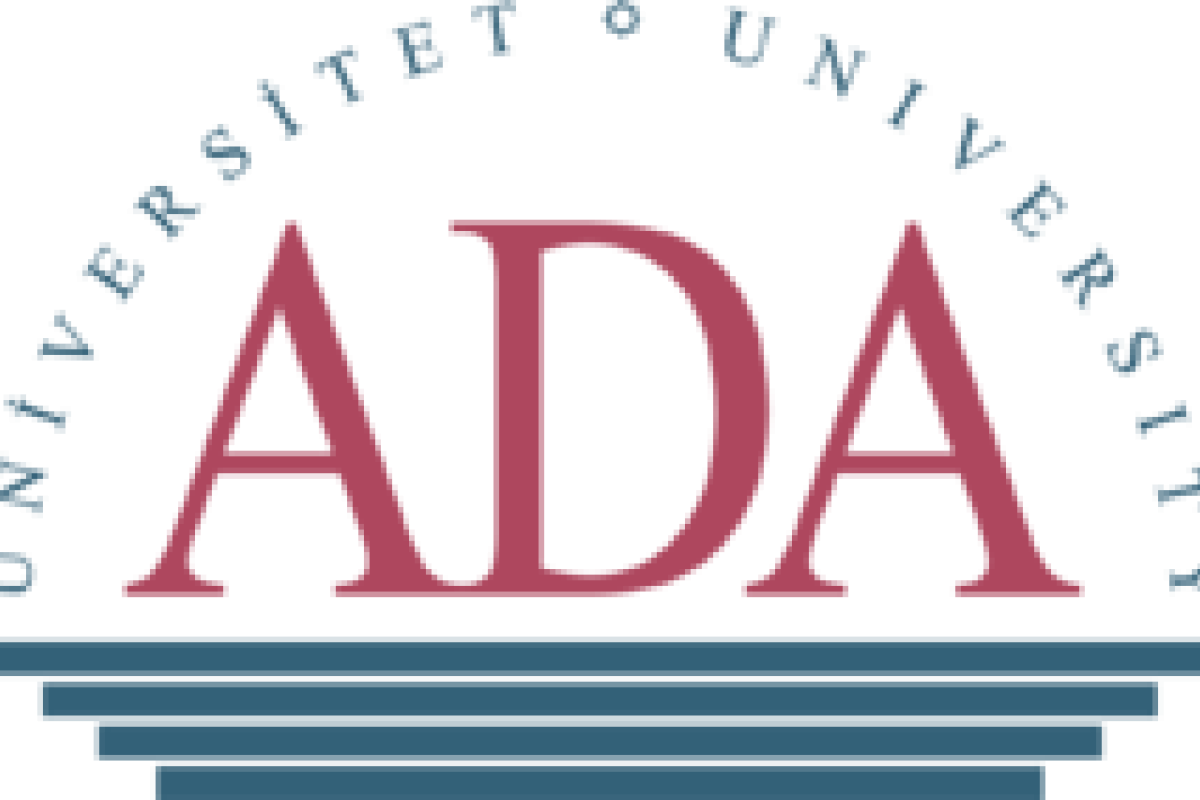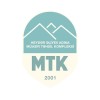ADA University

Şirkət haqqında:
ADA University was established under the decree dated January 13th, 2014, by the President of the Republic of Azerbaijan. The University is a state higher education institution engaged in the delivery of undergraduate and graduate degree programs in addition to the advancement of research.
The University is the legal heir of the Azerbaijan Diplomatic Academy (ADA) and Information Technologies University. They were merged in January 2014 to establish ADA University.
Founded on March 6, 2006, the Azerbaijan Diplomatic Academy began offering an Advanced Foreign Service Program to diplomats of the Ministry of Foreign Affairs and civil servants in the government, as of January 2007. The Academy launched its first master degree in September 2009, followed by bachelor degrees in September 2011.
Əlaqə vasitələri:
Assistant / Associate Professor in Planning and Urban Design
Department: School of Design & Architecture
Brief information about the School of Design & Architecture at ADA University
The School of Design and Architecture (SDA) is outlined in collaboration with the Politecnico di Milano in the framework of the Italy-Azerbaijan University initiative. It will offer bachelor's, master's and non-degree certificate programs in Design, Architecture and Urban Planning. ADA University is intertwined with the country’s plans, where economic and cultural growth lead the way. The urban areas are growing, and the country landscape and profile are evolving.
The School of Design and Architecture will share the polytechnic approach to Design, Architecture, and Urban Planning. Graduates will gain foundational disciplinary knowledge and practical experience, thanks to fundamental courses and the learning-by-doing educational approach that pursues up-to-date development lines in project-based design studios. The School of Design and Architecture offers an international level of study suitable for entering the job market as a junior architect or designer.
More information about SDA can be found at www.ada.edu.az/en/schools/sda
Why apply for this position
The School of Design and Architecture is the place for constant education and innovation, where students will develop the knowledge and skills to contribute to the country’s goal. Indeed, the School of Design and Architecture will raise a new generation of Designers, Architects, and Urban Planners who will participate in the country’s progress, sharing and making the vision for it.
For this purpose, the School of Design and Architecture will collaborate with public institutions to promote coordinated efforts toward progress, indicating priorities, developing projects, and anticipating future scenarios. Furthermore, the School of Design and Architecture will collaborate with local communities to promote the country’s development beyond Baku and with global partners to reach a multicultural environment and international status.
Due to this ambitious program, joining SDA will be an opportunity for academic growth and engagement within a new international community of designers and architects.
Brief description of responsibilities:
Principal responsibilities include teaching undergraduate courses in Architecture. Candidates must have a potential or demonstrated commitment to teaching excellence, scholarly research and publication in peer-reviewed journals, and academic engagement.
Qualifications:
- Candidates for Assistant Professor must have a Ph.D. in Design or Architecture from an accredited institution or anticipate completion by August 1, 2026, or sooner.
- Candidates for Associate Professor must have a Ph.D. and evidence of quality scholarship.
How to apply:
Please, send to the e-mail address in the Apply for job button the following documents in the PDF format by August 1, 2025, 10 PM Baku time (GMT+4).
- Cover letter (max 1 page)
- Curriculum vitae
- Portfolio of personal work
- Portfolio of selected students’ works (if available)
- Summary of teaching evaluations (if available)
- A list of publications and a PDF of a maximum of three of them
Women and members of minority groups are strongly urged to apply.
Teaching Position Details in Planning and Urban Design
Programme: Bachelor of Urban Planning
Year: 1st
Courses: Infrastructure and land use analysis module (Spatial Analysis and Mapping Studio) / Urban morphology and building typology analysis module (Spatial Analysis and Mapping Studio) / Urban Planning module (Urban Planning Studio) / Infrastructure planning module (Urban Planning Studio)
Description of the Disciplinary Area:
The disciplinary area of ‘Planning and Urban Design’ contributes to the acquisition of skills concerning the theories, techniques, and instruments of urban and territorial planning and design. Therefore, the courses which are related to this disciplinary area enable students to master the theoretical and operational tools and contents that lie at the heart of the Educational Programme in Urban Planning, concerning multi-scalar spatial planning and design. The acquired tools find application and verification of the ability to use them in the operational activities which are envisaged in the relative theoretical courses (both majors and electives), but typically and above all in the activities of the Studios. Indeed, whilst theoretical courses within the disciplinary area of ‘Planning and Urban Design’ provide learnings of theories, techniques, and instruments (general in majors and thematic in electives), the Studios are considered as operational courses that are explicitly entrusted with the task of synthesing and verifying the application skills of knowledge, understanding, and methodologies supporting the urban planning project in relation to: (i) the physical, historical-cultural, ecological-environmental, landscape and socio-economic characteristics at the multiple scales of cities and territories; (ii) the evaluation of the effects produced by urban and territorial transformations in their broader cultural, social, economic, environmental and landscape context; (iii) the administrative procedures and related activities.
Description of the courses
- Spatial Analysis and Mapping Studio
Semester: First
Start dates: February 2026 (teaching starts September 2026)
The Spatial Analysis and Mapping Studio aims to introduce students to the complexity of territorial phenomena by focusing on the observation, reading, interpretation, and understanding of urban settlements in relation to spatial characteristics, and to trans-scalar economic, environmental, and social dynamics of contemporary cities. In this perspective, and thus interacting with economic, environmental, and social sciences, spatial analysis and mapping is proposed as the first step for the development of spatial planning, policy, and design ideas centered on the relationships between the quality of places, their multiple levels of accessibility and mobility, and the quality of life. To these purposes, the Studio integrates theoretical contributions (by lessons, seminars, and bibliographical exercises) with operational and empirical activities of observation, reading, interpretation, and understanding of urban settlements based on existing cartography and reports, on ongoing policy and planning documents, as well as on direct field visits and research. Among international and local sources and case studies, these activities are aimed to develop the awareness of the students about the multiplicity of the physical components of the built environment and the connected open spaces and landscapes (such as, infrastructures, land use, urban morphology, building typology), the historical stratification and the urban-rural hybridization of their interactions, and the complexity of their connections with trans-scalar economic activities, environmental values, and social relationships.
*Studio courses are structured in two distinct, competency-specific modules. Applicants may apply for only one module within the course, based on their relevant competencies.
- Infrastructure and land use analysis module
Basic knowledge required to teach the course:
- Strong understanding of urban planning and design foundations, theoretical principles, technical lexicon, and methodologies.
- Ability in collecting, synthetically depicting, and efficaciously representing (manually and digitally) available data and information concerning infrastructure and land use in relation to the multiplicity of urban, economic, environmental, and social issues characterizing contemporary cities, and to the variety of points of view.
- Ability in recognizing, assessing and arguing the spatial complexity of infrastructure and land use in relation to their multifaceted territorial contexts, and to contemporary planning challenges of urban regeneration and reconnection, and of economic, environmental, and social resiliency and sustainability.
- Ability in teaching various technical and expressive methods in spatial analysis and mapping of urban forms, networks, phenomena, and dynamics through multiple tools like territorial maps, thematic maps, diagrams, or images.
- Specific expertise in guiding students through exercises of spatial analysis and mapping by referring and integrating the analysis of infrastructure and land use to the characteristics of urban morphology and building typology.
- Experience in organizing and assessing students' outcomes through examination and public display.
- Urban morphology and building typology analysis module
Basic knowledge required to teach the course:
- Strong understanding of urban planning and design foundations, theoretical principles, technical lexicon, and methodologies.
- Ability in collecting, synthetically depicting, and efficaciously representing (manually and digitally) available data and information concerning urban morphology and building typology in relation to the multiplicity of urban, economic, environmental, and social issues characterizing contemporary cities, and to the variety of points of view.
- Ability in recognizing, assessing and arguing the spatial complexity of urban morphology and building typology in relation to their multifaceted territorial contexts, and to contemporary planning challenges of urban regeneration and reconnection, and of economic, environmental, and social resiliency and sustainability.
- Ability in teaching various technical and expressive methods in spatial analysis and mapping of urban forms, networks, phenomena, and dynamics through multiple tools like territorial maps, thematic maps, diagrams, or images.
- Specific expertise in guiding students through exercises of spatial analysis and mapping by referring and integrating the analysis of urban morphology and building typology to the characteristics of infrastructure and land use.
- Experience in organizing and assessing students' outcomes through examination and public display.
- Urban Planning Studio
Semester: Second
Start dates: October 2026 (teaching starts January 2027)
The Urban Planning Studio aims to provide students with first applicative experiences of basic town planning grounds, notions, and techniques. Specifically, it aims to develop the awareness and skills of students in relation to urban planning tools and mechanisms by combining strategies, actions, and rules for the improvement of urban settlements, open spaces, and transport accessibility and mobility. Accordingly, the Studio aims to provide students with knowledge and understanding to outline city-level urban planning solutions in relation to: the complexity of forms, networks, phenomena, and dynamics emerging from spatial analysis and mapping; the ongoing urban planning legislation; the different disciplinary methodologies and approaches in connection to their multiple configurations and technical representations; the sustainability of transport accessibility and mobility.
Integrating theoretical contributions (by lessons, seminars, and bibliographical exercises) with operational and empirical activities (of critical disassembly and reassembly of an approved and current urban plan), the Studio aims to develop knowledge and understanding regarding: (i) the theoretical bases, conceptual interpretations, roles, contents, forms, structure, and components of urban plans; (ii) the different scales of urban planning, from city-level to neighborhood level; (iii) the urban planning processes in relation to main policymakers, actors, and stakeholders, with a specific focus on the interactions between public and private interests; (iv) the spatial effects of urban planning projects, beginning with the connections between land use and urban morphology, and the design of public city and open spaces.
*Studio courses are structured in two distinct, competency-specific modules. Applicants may apply for only one module within the course, based on their relevant competencies.
- Urban planning module
Basic knowledge required to teach the course:
- Strong understanding of urban planning and design foundations, theoretical principles, technical lexicon, and methodologies.
- Proficiency and teaching ability in urban planning techniques and tools, and in the application of their strategies, actions, and rules in relation to the complexity of spatial, socio-economic, and environmental characteristics of multifaceted territorial contexts.
- Proficiency and teaching ability in urban planning techniques and tools, and in the application of their strategies, actions, and rules in relation to the contemporary planning challenges of urban conservation, transformation, and regeneration targeted to the decrease of socio-spatial disparities, the adaptation to the climate change, and the ecological transition of cities and society.
- Proficiency and teaching ability in urban planning techniques and tools, and in their articulation into building rules and guidelines for driving following urban projects according to the multifaceted framework of ongoing norms and regulations, and to the variety of implementation tools and mechanisms.
- Proficiency and teaching ability in the representation and communication of urban planning strategies, actions, rules, and related spatial simulations.
- Ability to guide students through exercises of urban planning in relation to multifaceted territorial contexts, and to direct connections with transport planning.
- Experience in organizing and assessing students' outcomes through examination and public display.
- Infrastructure planning module
Basic knowledge required to teach the course:
- Strong understanding of urban planning and design foundations, theoretical principles, technical lexicon, and methodologies.
- Strong understanding of transport planning and design foundations, theoretical principles, technical lexicon, and methodologies.
- Proficiency and teaching ability in transport planning techniques and tools, and in their application in relation to the complexity of spatial, socio-economic, and environmental characteristics of multifaceted territorial contexts.
- Proficiency and teaching ability in transport planning techniques and tools, and in their application in relation to the contemporary planning challenges of green mobility, electric mobility, soft mobility, sharing mobility, and multimodality of public transport.
- Ability in guiding students through exercises of representation and communication of transport planning strategies, actions, and spatial simulation, and of their integration with urban planning and design.
- Experience in organizing and assessing students' outcomes through examination and public display.





























 Mobil:
Mobil:  Web:
Web:  Əlaqələri yadda saxla
Əlaqələri yadda saxla
 ADA University
ADA University